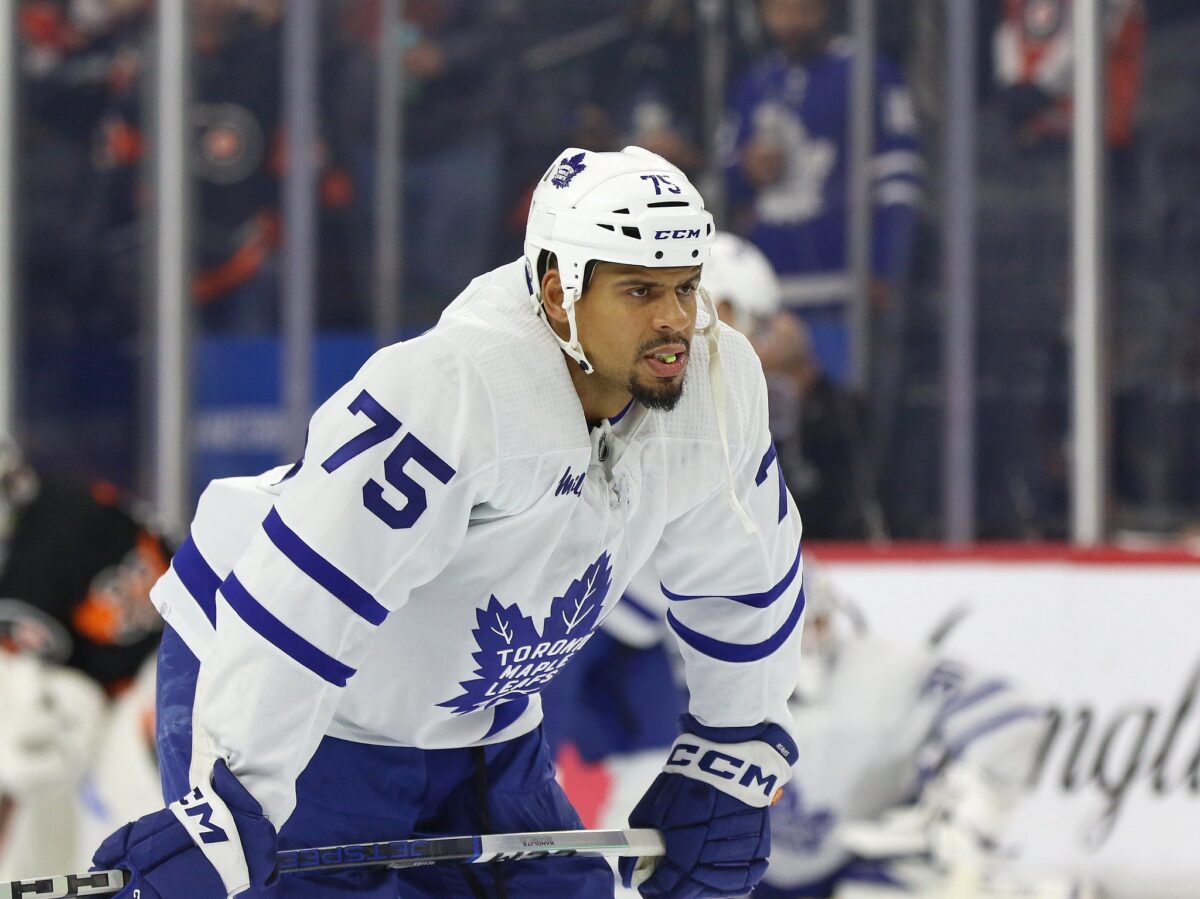The Toronto Maple Leafs are approaching full health, with several key players, including Calle Jarnkrok and Connor Dewar, likely to return to the lineup soon. As these players return, the Maple Leafs coaching staff faces tough roster decisions to maintain depth, balance, and effectiveness.
This season, roster management could play a pivotal role in shaping the team’s competitive edge, especially as they look to maximize production from the bottom six. This post will examine changes, trade possibilities, and internal call-ups that could bolster the team’s depth and flexibility.
The Impact of Returning Players on Roster Depth
The return of Jarnkrok and Dewar is significant for the Maple Leafs, particularly in the bottom six. Jarnkrok’s versatility—he can play both wings and contribute to penalty kills—offers valuable options. He has a knack for providing secondary scoring when needed and brings a responsible, two-way style that complements the Maple Leafs’ lineup.
Related: Maple Leafs’ Knies Playing Towards Big Pay Day
Meanwhile, Dewar is an energy player. He brings solid defensive instincts and can also contribute physically—a quality the team has occasionally lacked this season. Both players’ returns would likely prompt adjustments to the lineup, potentially impacting the roles of players like Pontus Holmberg or Ryan Reaves.

Holmberg, while defensively reliable, has struggled to establish himself offensively. His place in the lineup could be at risk. Reaves, brought in primarily for his physical presence, has contributed limited minutes. The Maple Leafs might need to weigh his impact in games against his roster spot, especially if they continue seeking greater speed and offensive flexibility in the bottom six.
Trade Market Possibilities
General Manager Brad Treliving could also consider the trade market to address depth and balance on the roster. While the Maple Leafs aren’t necessarily in a rush to make trades, looking at options to strengthen the lineup or increase cap flexibility might be on Treliving’s radar. Players who bring a blend of offensive upside and physical play could be particularly appealing, as the Maple Leafs have often struggled to find players who contribute effectively in both areas.
Related: Is Toronto Too Tough for Maple Leafs’ Young Defensemen to Thrive?
One potential trade target might be a forward with a low cap hit who can add some grit and scoring depth—perhaps a player from a team looking to free up space for their roster needs. Alternatively, Treliving might consider trading someone like Reaves if the coaching staff feels the roster would benefit more from a player who can provide consistent offensive pressure. Of course, these moves would depend on what’s available in the market and whether a team is open to moving a depth player early in the season.

Another consideration is acquiring a defenseman with a minimal cap hit to shore up the team’s bottom pair, indirectly freeing up forwards to focus on offensive responsibilities. While this wouldn’t immediately affect the forward depth, a stronger blue line would lessen the defensive burden on the lower forward lines, potentially improving their productivity.
Alex Steeves and Alex Nylander Are Making Their Case
Beyond potential trades, the Maple Leafs have promising internal options in the American Hockey League (AHL) with players like Alex Steeves and Alex Nylander, who have started the season strong with the Toronto Marlies. Steeves, known for his aggressive forechecking and quick release, has displayed early-season scoring power and energy that could translate well to the team’s bottom six. He’s developed a solid two-way game and has been noted for his commitment to defense, which could help him carve out a niche on the main roster.
Related: Maple Leafs’ Alex Steeves: Determined to Dominate
Nylander, on the other hand, brings a different skill set. Known for his smooth skating and offensive instincts, Nylander (who rejected other NHL offers to sign in Toronto) has been impressive on the Marlies. He’s showing he can play a playmaking role or act as a secondary scorer. His game, however, has room for growth defensively, which might impact his chances of sticking on the Maple Leafs’ roster. Still, Nylander’s offensive skills make him an exciting option, especially if the Maple Leafs seek to inject creativity into the bottom six.

Steeves and Nylander represent potential call-ups that could shake up the Maple Leafs’ current lineup, mainly if injuries occur or other players struggle to find consistency. Their performances with the Marlies also provide Treliving and the coaching staff additional flexibility, as either player could be brought in based on specific team needs.
The Bottom Line: Evolving Forward Depth Through the Season
The Maple Leafs’ forward depth will likely evolve as the season progresses due to returning players, potential trade opportunities, and possible call-ups from within the organization. The return of Jarnkrok and Dewar will bring stability to the lower lines, but the team’s depth might benefit from further adjustments to balance offensive output and physicality. If Steeves or Nylander receive a call-up, they could add energy or offensive creativity to the bottom six, further enhancing lineup options.
Related: 7 Cool Things About Carey Price
Healthy competition for spots and the possibility of midseason trades mean the Maple Leafs’ lineup will likely remain dynamic. Treliving’s decisions regarding roster depth could impact the team’s success, especially in tight games where depth scoring or defensive tenacity can make the difference. By staying open to internal call-ups, potential trades, and the return of key players, the team can continue building a roster that adapts to meet the demands of a long season and positions itself well for a deep playoff run.
[Note: I want to thank long-time Maple Leafs fan Stan Smith for collaborating with me on this post. Stan’s Facebook profile can be found here.]
